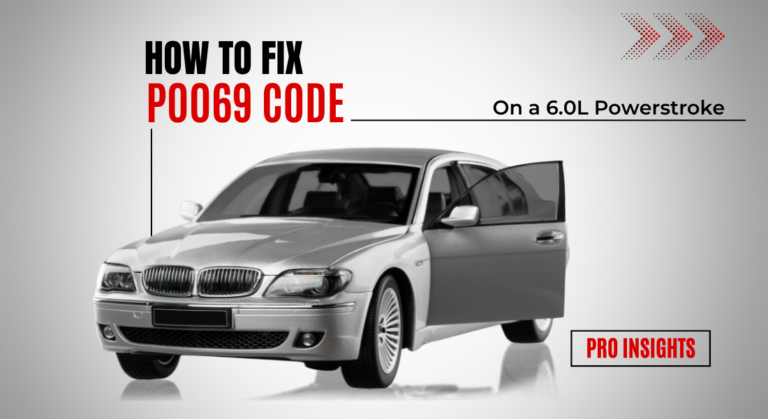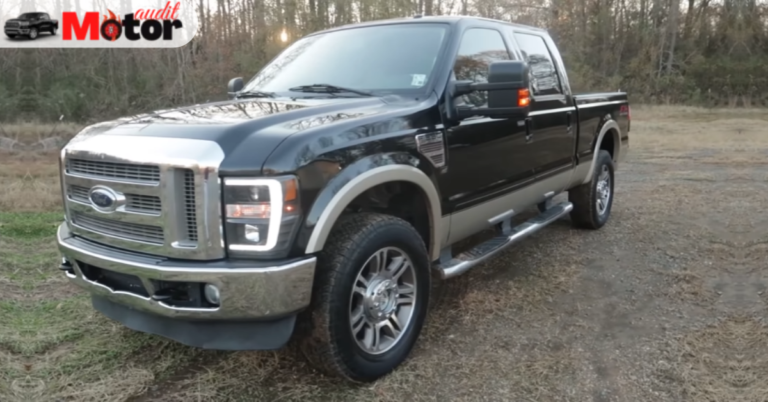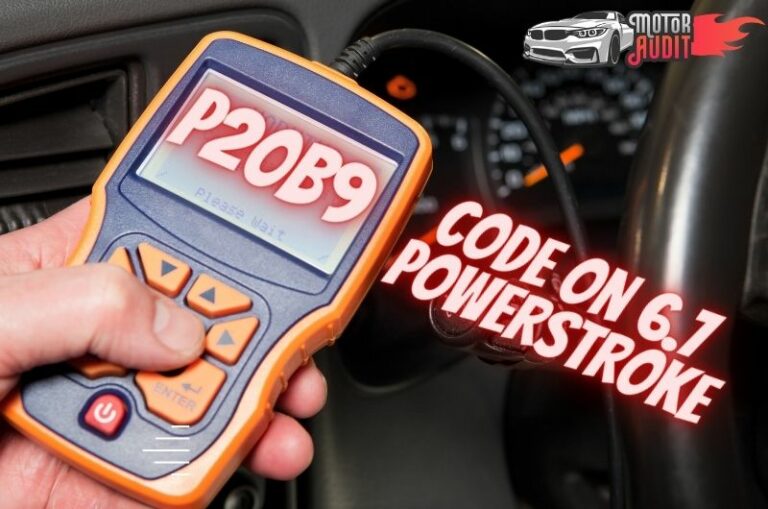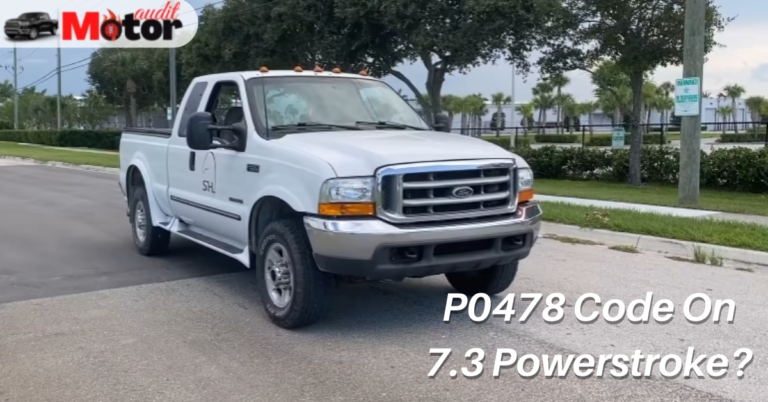Which 6.0L Powerstroke Years to Avoid and Why? (Reasons)
The 6.0 Power Stroke Ford engine has one of the worst reputations in the entire diesel history. It has acquired a negative reputation no one believes it can.
People have had such a lousy record that interested people are still concerned with questions like what is the best and worst years for 6.0 Powerstroke.
Frequent turbo failure, issues with EGR valve and exhaustion system, clogged oil cooler are some common problems of 6.0 Powerstroke engines.
Altogether, the user experience has got tremendously bad and marked the period of 6.0 Powerstroke manufacture as the darkest time for Ford.
What are the Worst 6.0 Powerstroke Years and Why?
From January 2003, the US federal government asked diesel engine vehicles to follow stricter guidelines. Ford could have followed that guideline just by adding an EGR, a clean-burning engine, and a geometry turbo to its previously made 7.3L.
But instead, Ford created an entirely new engine to satisfy 2003 federal regulations, provide more power compared to its competitors, increase fuel efficiency, and decrease engine noise.
To complete the task, Ford used variable-geometry turbo, 4 valves system, digital fuel injection, and EGR. All these updates brought some improvements. However, at the same time, users experienced different issues. Here’s a detailed year by year narrative of those issues:
1. Worst Year: 6.0L Powerstroke 2003
The early 6.0 Powerstroke oil injection system ran on the oil pressure, and there’s a lot of it. Issues with the High-Pressure Oil System (HPOS) included oil leaks produced by deteriorated O-rings induced by these high-oil temperatures and pressure. Then, Ford upgraded the entire design of these O-rings and introduced a new fitting to replace the traditional STC.
Anyone who still has the STC installed on his 6.0 Power Stroke Engine can expect it to fail soon if it hasn’t already. Common symptoms include difficulty starting, no start, and power drain, which occur more often when the engine is heated.
The HPOS on the 6.0L Powerstroke engines had a different design, and the majority of the problems were caused by a bad ICP sensor placed under the turbo. This turbo used to fail due to heat, or a damaged HPOP, or a failed IPR.
Read Also: What Is P1000 Code On 6.0 / 6.4 / 6.7 / 7.3 Powerstroke?
2. Worst Year: 6.0L Powerstroke 2004
The EGR is to cool down the exhaust gas that’s sent back into the manifold intake and re-burned for better emissions. If it fails, the coolant element enters the intake manifold and gets burnt in the combustion room. It results in coolant drain as well as white smoke out of the tailpipe.
Both the valve and the EGR cooler are prone to failure, with soot accumulation being the most frequent cause. When soot gathers in the EGR cooler, it may get blocked, and the extra heat can cause the coolant gas in the exchanger to boil.
The engine is able to hydro-lock and inflict significant engine damage, such as connecting rods, depending on the degree of the failure. A blocked or limited Oil Cooler causes the EGR Cooler to fail.
Comparatively, the circular EGR cooler used in 2003 was less prone to failure than the less efficient square coolers found on 2004 to 2007 engines.
Read Also: What Is P0672 Code On 6.0 Powerstroke? (Answer Explained)
3. Worst Year: 6.0 Powerstroke 2005
The EGR valve is a computer-controlled valve that regulates the flow amount of exhaust gas while it gets into the intake manifold. In the 2005 version of 6.0 Powerstroke, these valves often failed because of carbon build-up in the valve. They can also fail electronically.
If they fail, it may produce black smoke, lose power, fail to start, and make a fluttering sound.
Users needed to clean the EGR valve at every oil change to keep it in good working order. Issues that emerged from EGR-valve were common in the 2005 years of Powerstroke.
Read Also: What Is The 6.0 Powerstroke Oil in Coolant: Cause and Fix
4. Worst Year: 6.0 Powerstroke 2006
The 6.0 Powerstroke diesel engine in 2006 had a mono vane VGT to minimize turbo lag as well as improve throttle responsiveness. If a turbocharger began to fail, it exhibited symptoms similar to a faulty EGR valve.
A problem occurred when the vanes regulated boost got clogged with rust or carbon, resulting in over boost and even no-boost conditions. Moreover, the turbocharger sometimes needed to be disassembled and cleaned.
There’s another kind of issue called bearing failure that throws shrapnel directly into the cylinders and harms the engine.
5. Worst Year: 6.0 Powerstroke 2007
Most 6.0 Powerstroke issues in 2007 year were caused by the oil cooler. It functions similarly to a small radiator and cools the main engine fuel by transferring heat via the engine coolant.
No warning indications of a clogged or limited oil cooler were there. Tests can be performed to identify whether a problem is present and ready to occur.
The cooler becomes unavailable and clogged as a result of silicone sand accumulation in the system. These clogs mostly happened due to sand accumulation which fallen the remnant from the casting process of the engine block.
Since it wasn’t thoroughly washed from the channels before the main engine was built, it accumulated at the oil cooler.
Read Also: How Much Does It Cost to Replace A 6.7 Powerstroke Engine?
What are the Best Years of 6.0L Powerstroke?
Among this 2003 to 2007 period, no year could bring a top-notch 6.0 Powerstroke engine. With the coil spring at the front end, the 2005-2007 models get slightly better rides, a little better out of the norm.
This provides users with a more appealing platform to begin their development. However, oil leaks caused by high pressure are persistent on later model oil rails.
While many consumers complained that their vehicle started and operated well when cold, they could usually identify a leak beneath a valve cover. However, when the engine was hot, they wouldn’t start.
It should be notable that diesel engines come without issues. However, in terms of the extent and seriousness, 2003 to 2007 years were a dark age for Ford diesel engines. Among these years, 2005 to 2007 years gave some solace.
Conclusion
If you want a 6.0L, be sure you know what you’re setting for. Recheck your requirements and be sure that all the things listed above are considerable for you. It eventually can be a good purchase.
To get the best 6.0 Powerstroke engine, you should look for the 2006-2007 year versions that come with the studs and also a set of injectors replaced by a reputable store to support their work.
As you have learned what are the best and worst years for 6.0 Powerstroke, finding the right one won’t be difficult.
Read Also: What Is P01C6 code On 6.7 Powerstroke? (Answer Explained)




